Y-12 Blog
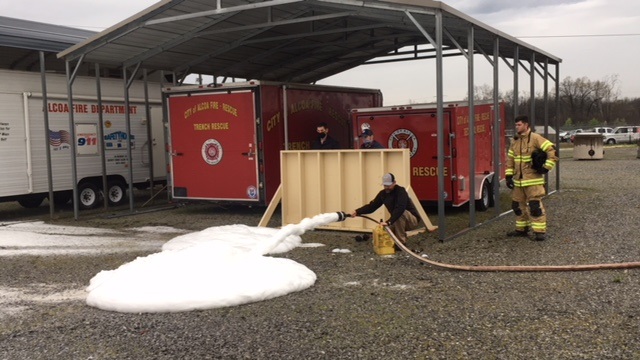
Y-12 Fire Department recently tested a new environmentally safer foam with the Alcoa Fire Department.
The Y-12 Fire Department recognizes Earth Day as an opportunity to celebrate environmental successes and be creative in ways in which they are striving to improve.
Division Chief Ben Taylor said, “The fire service has an intimate relationship with the environment at large and water, which is typically used for fire suppression, so it makes sense for our team to look at ways we can adapt and continuously improve.”
One way firefighters look to improve is to find alternatives for often-used, expanding foams that help fight fires. Unfortunately, these foams typically contain pre and polyfluoroalkyl substances, or PFAS, which include various chemicals that have been increasingly studied due to their effects on the environment. Y-12 Fire Department recently partnered with several local fire departments to find an effective and environmentally safe product.
“Foam is essential for fighting a variety of fires — everything from brush fires to liquid petroleum fires,” Taylor said.
As a result of the collaboration, a new, fluorine free foam product was found that is effective, meets stringent Environmental Protection Agency testing, and allows for a seamless transition to the new product. The new foam will also be locally stored by supplies in large quantities.
“Having the new, environmentally safer foam will allow Y-12 Fire Department to continue to meet emergency response needs of Y-12 and bulk off site storage will maintain large scale response capability,” Taylor said.
“Earth Day is a reminder that we all share the environment,” Taylor said. “Actions we take now will have lasting impacts on generations to come. Recycling, reducing waste, and using innovative products, like this foam, will help to ensure that future generations will have a healthy environment to enjoy.”
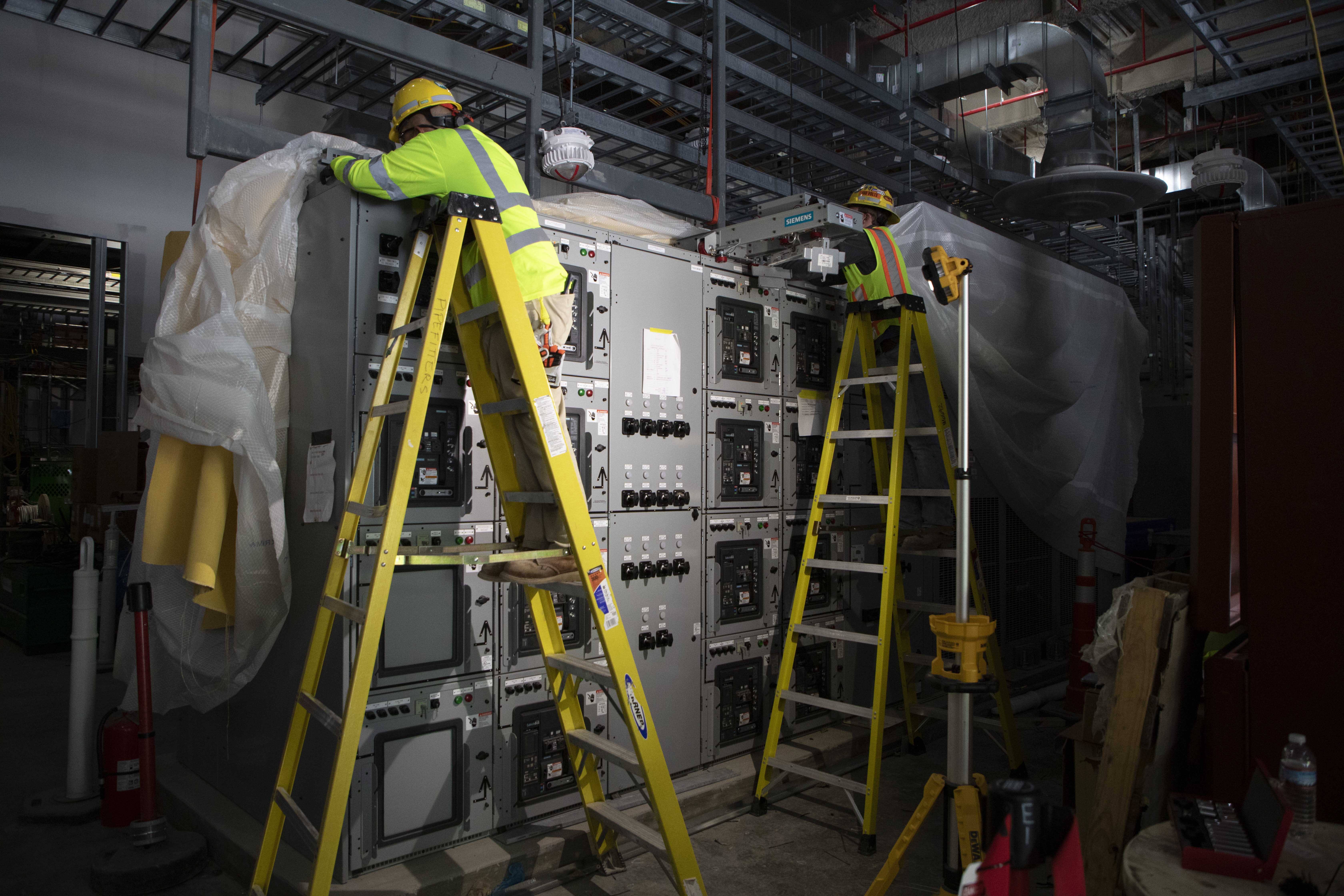
Installation of the 13.8kV switchgear in the Uranium Processing Facility’s Mechanical Electrical Building
The Uranium Processing Facility (UPF) Project ‘flipped the switch’ as it energized the first of the facility’s electrical power systems.
During the first quarter of 2021, the project successfully energized Direct Current Power in the Mechanical Electrical Building (MEB). The system provides the breaker and relay control power to the UPF Project's 13.8kV switchgear.
“The start-up of these systems signifies a new phase for the UPF Project as we transition from design and installation to start-up and energization,” said Jeremy Wilkins, UPF Start-Up Manager.
The Start-Up team is now working to energize medium voltage and low voltage equipment in the MEB, which is scheduled to be complete by the end of April. Once all of the electrical systems have been energized, they can distribute power to the entire project.
“The UPF Project continues to make significant progress for our nation as we start turning our systems over to start-up,” said Dena Volovar, UPF Project Director. “This milestone is evidence of the quality work of all engaged on MEB over the last few years – through design to procurement to install to operating and all the steps in between – truly a team accomplishment!”
The UPF Pine Ridge Substation, which was completed ahead of schedule and under budget in 2019, supplies the power to the site as these systems are turned on. The substation, which was designed and built by the Tennessee Valley Authority, was the third subproject completed for the project.
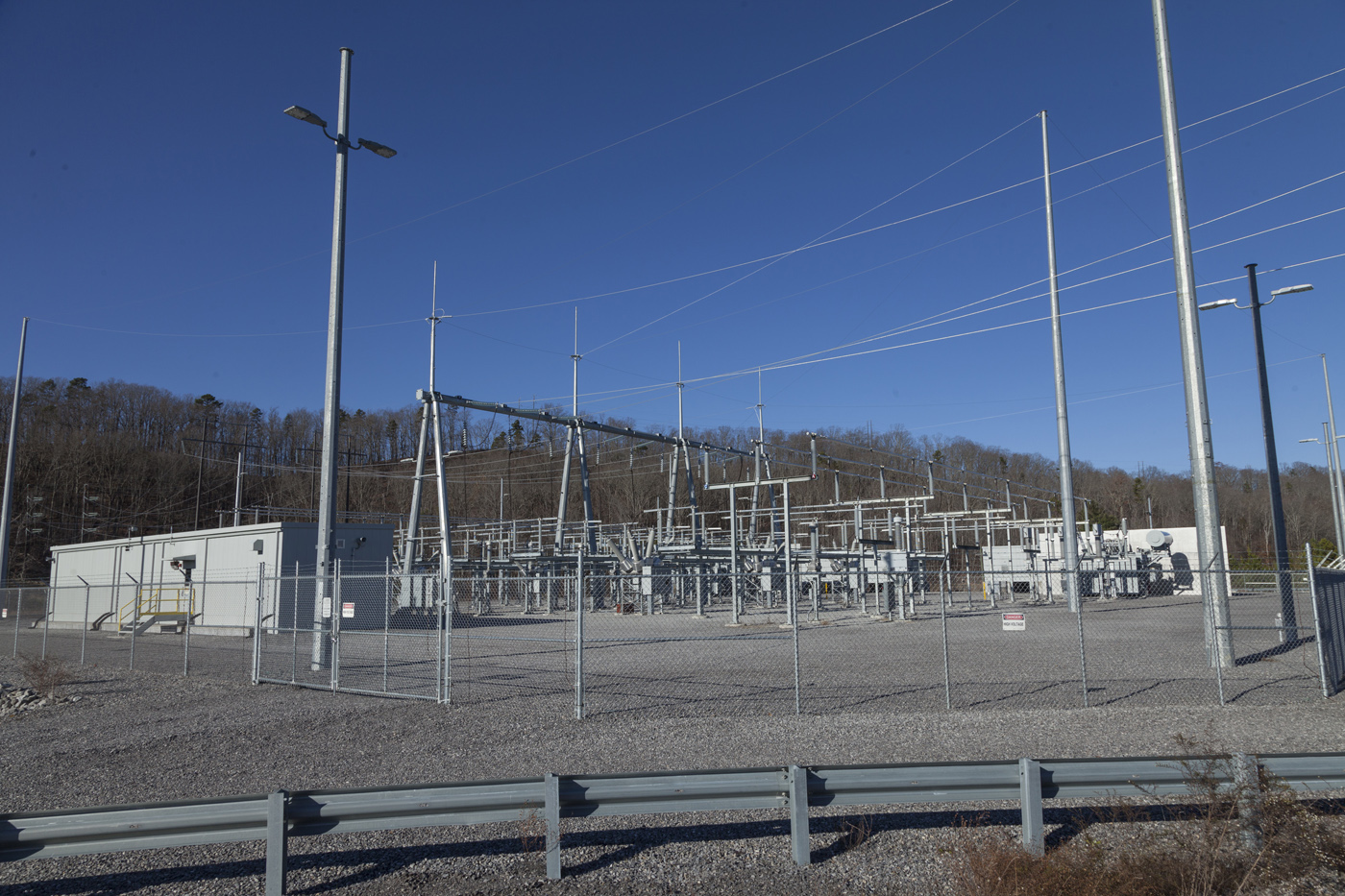
The new substation will service both the Y-12 National Security Complex and the UPF Project, replacing an existing substation at Y-12 which is reaching the end of its service life. Servicing both sites with a single, modern substation is significantly more reliable and cost-effective to operate.
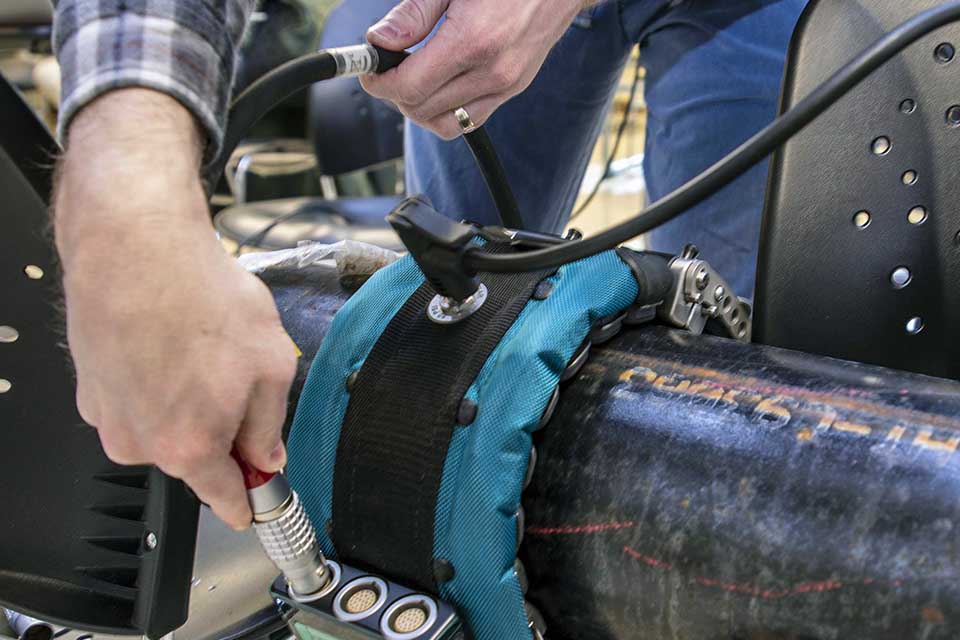
Guided wave ultrasonic testing involves wrapping an ultrasonic, low-frequency transducer ring around a pipe and sending a pulse 100 feet in both directions to test for pipe obstructions and pipe-wall thickness.
A project to deliver a new technology for assessing Y-12 fire suppression systems is on track for completion in 2021. Five employees qualified with the equipment earlier this year, and the technology is now in the proof-of-concept phase.
The project involves using a nondestructive tool—guided wave ultrasonic testing (GWUT)—to screen wet and dry fire suppression systems for blockages or corrosion. Use of nondestructive technology for assessment is important because many of the pipes in the fire suppression systems were installed about 70 years ago, and the current testing method Y-12 uses requires the removal of piping sections.
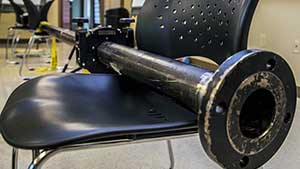
The 9-foot test rig completed by the metal fabrication shop for the training on guided wave ultrasonic testing.
“There is a risk in dealing with old pipe,” said Bobby Jenkins, Emergency Services Systems Operations manager, who initiated pursuing a nondestructive assessment method. “The nondestructive method is better in terms of risk and cost. We don’t need to disassemble pipe or take out sections unless we find something.”
Jenkins’ interest in nondestructive assessment led him to Steve Dekanich, a senior metallurgist in Quality Operations Support. “We needed a way to streamline the process and make it more efficient and cost effective,” Dekanich said.
He explained the GWUT method can test a 200 foot section of pipe at one time, whereas the existing method can only test a 10-foot section. GWUT involves wrapping an ultrasonic, low-frequency transducer collar around a pipe and sending a pulse 100 feet in both directions to test for pipe obstructions and pipe-wall thickness.
During proof-of-concept testing, the equipment will be placed in a central location where the researchers and newly qualified equipment operators will work on technical development using sample piping.
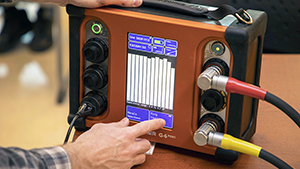
The Wavemaker G4 Mini from Guided Ultrasonics Ltd. connects to the transducer rings and collects guided wave ultrasonic testing data for further analysis.
“This new method is a lower-cost activity. We can cover a lot more area with new equipment. This method is smarter, more efficient,” Jenkins said. Y-12 maintains nearly 300 sprinkler systems and performs 15 to 20 internal inspections each year at an annual cost of $200,000.
Both Dekanich and Project and training lead Aaron Bales see the GWUT method as having potential for implementation across the Nuclear Security Enterprise because of its efficiency and costs savings.
Most importantly, Jenkins said, “This tool provides assurance of reliability in the event the system needs to be used. It’s one less thing to worry about.”
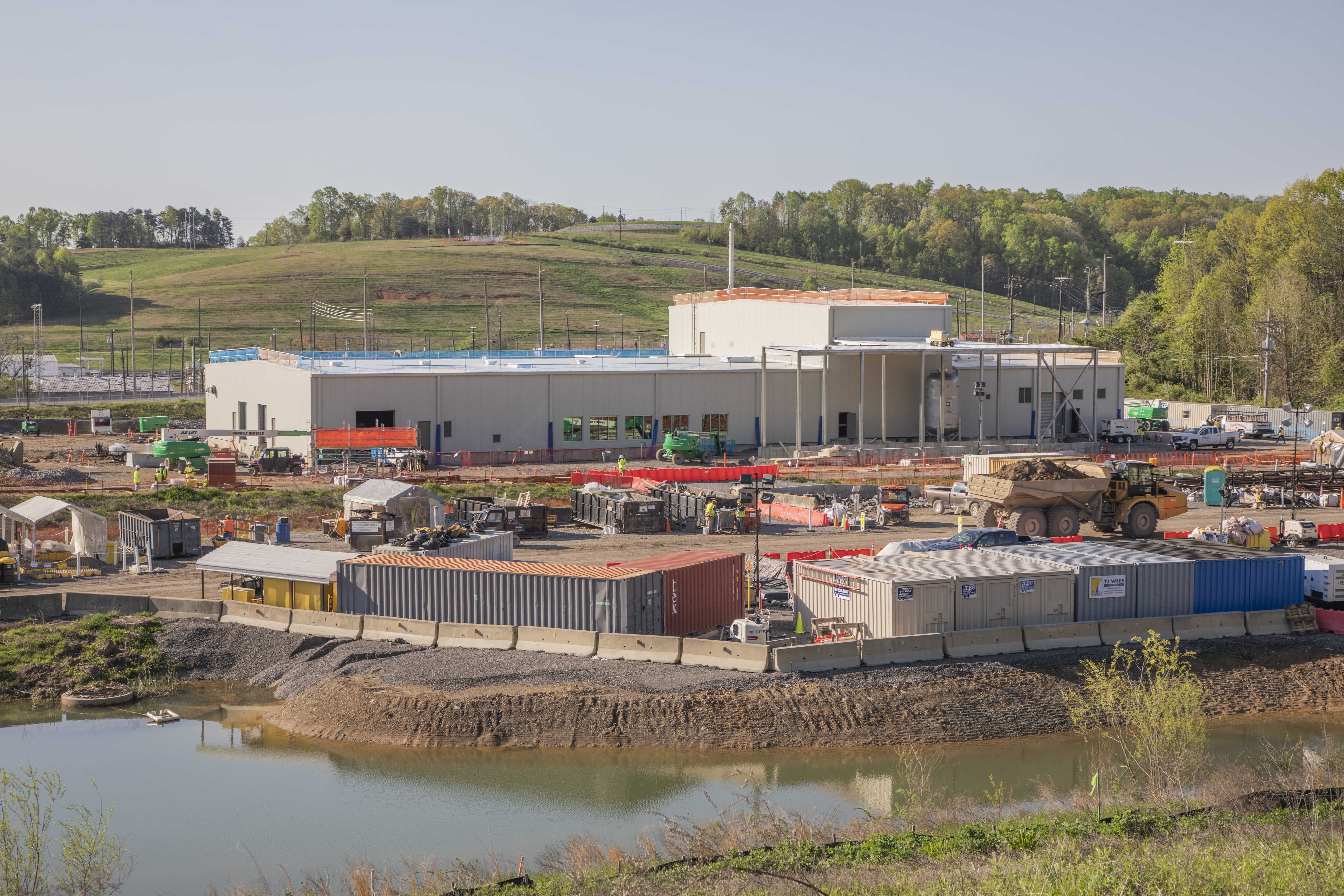
The Process Support Facilities at the Uranium Processing Facility
The Uranium Processing Facility (UPF) Project at the Y-12 National Security Complex installed the last piece of siding for the Process Support Facilities (PSF) on Monday, April 12, marking a significant milestone for the UPF Project. The PSF is now fully enclosed, known in the construction industry as “in the dry”.
The PSF, one of seven UPF subprojects, began in 2019 and will be completed by 2025, for a total cost of $140M. The 24,000-square-foot structure was built to commercial standards and, once completed and fully operational, will support UPF operations as a storage area for chemicals, demineralized water, waste containers, and wastewater.
The PSF subproject includes the building’s construction and equipment installation, as well as a gas storage yard, which is being built east of the facility. The gas storage yard will house vaporizers, tanks, control valve stations, and supporting electrical equipment for UPF.
“Enclosing the Process Support Facilities is a major achievement for the project as we build our nation’s UPF,” said Dena Volovar, UPF Project Director. “This milestone was achieved by the hard work and long hours of many individuals working together throughout the pandemic to make it possible.”
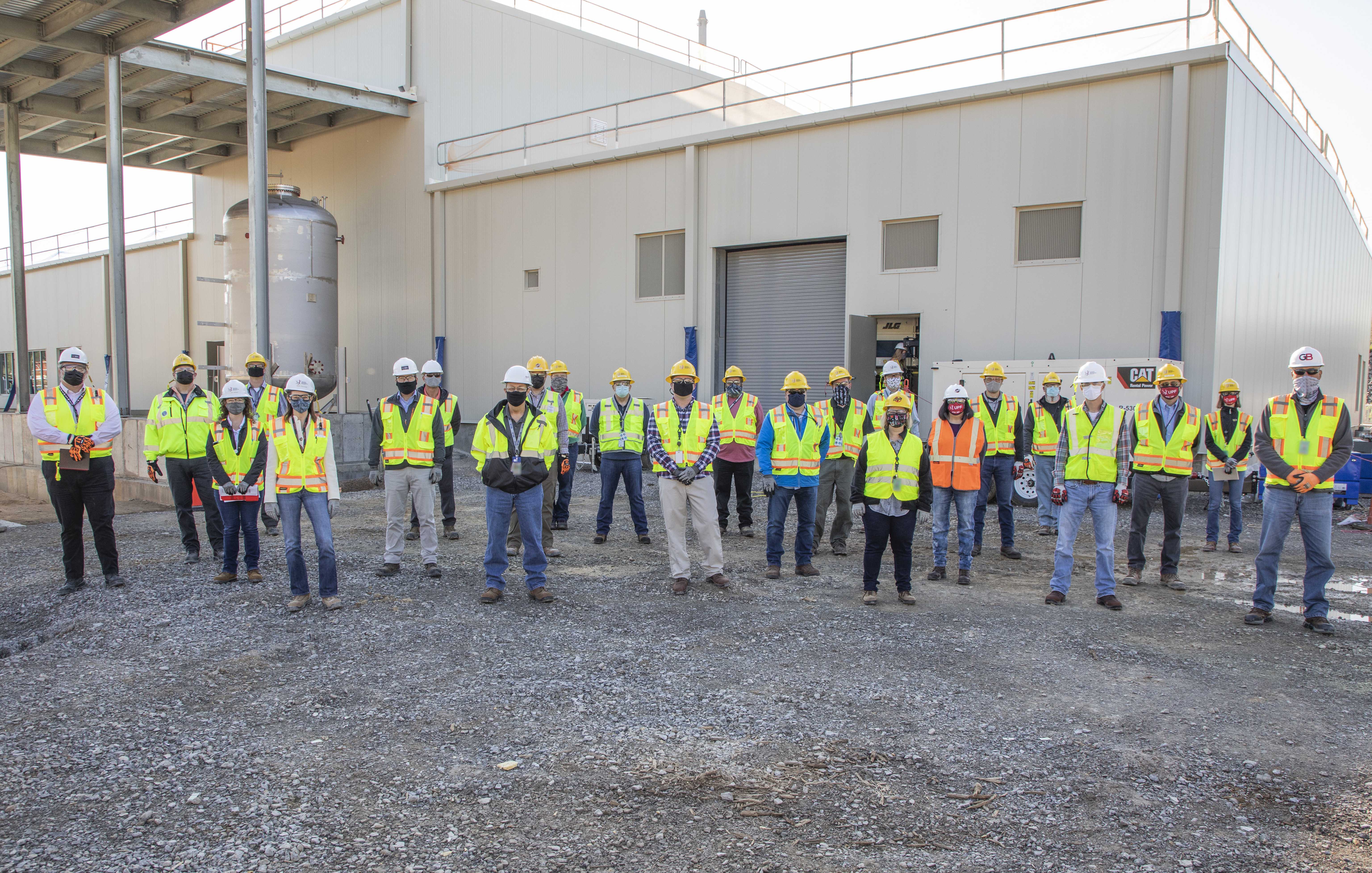
Several members of the PSF team at the PSF "in the dry" ceremony on Monday, April 12.
Construction will now move to the interior of the building, as crews work on piping and supports, electrical installation, and mechanical equipment skids.
UPF supports the nation’s Uranium Mission Strategy, which ensures the long-term viability, safety, and security of enriched uranium capabilities in the United States. UPF will replace casting, special oxide production, and salvage and accountability capabilities from a World War II era building with a modern, more efficient, and safer facility for conducting highly enriched uranium processing operations at the Y-12 National Security Complex.
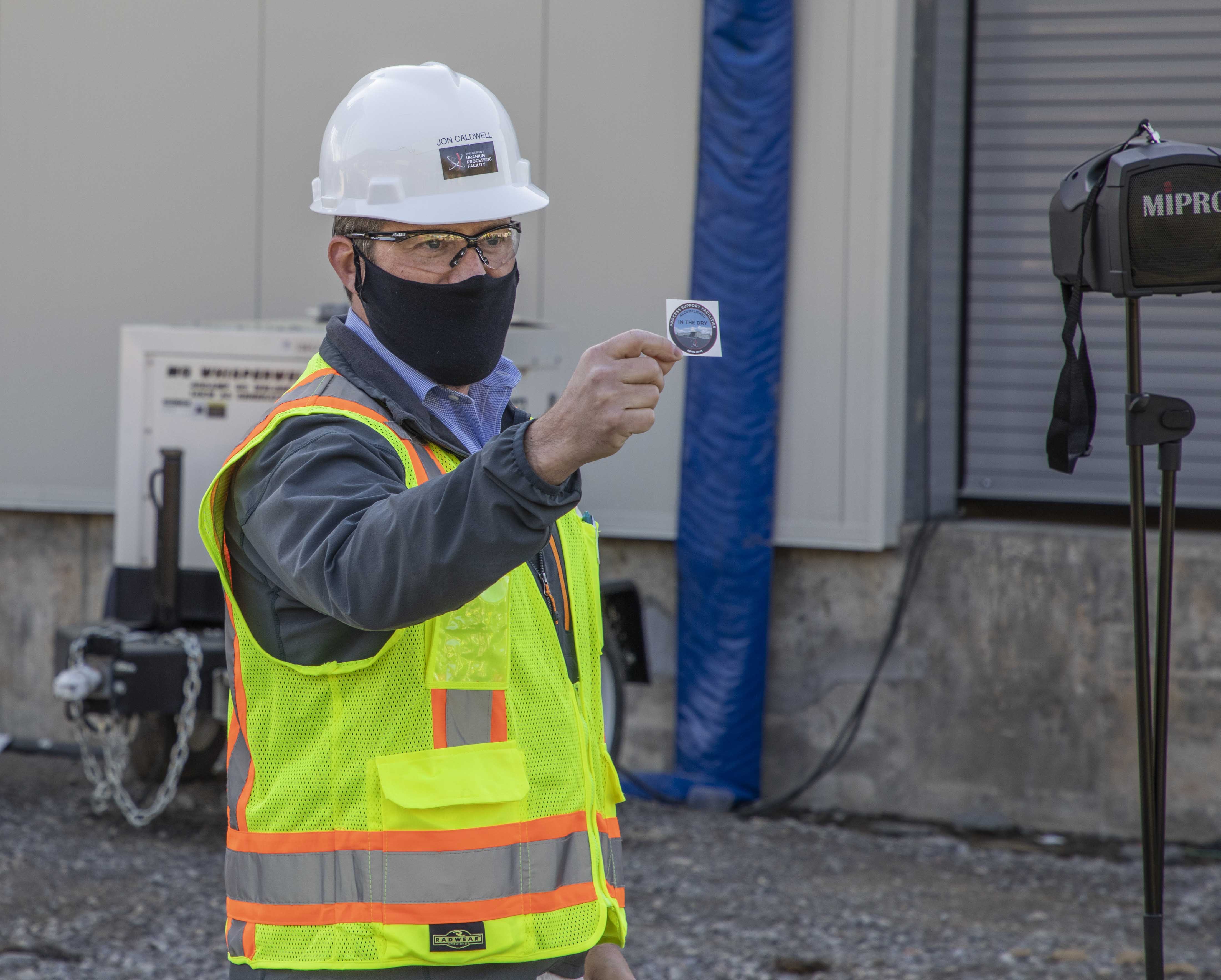
PSF Federal Project Director holding a UPF hard hat sticker to commemorate the milestone
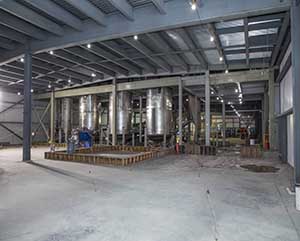
The interior of the Process Support Facilities
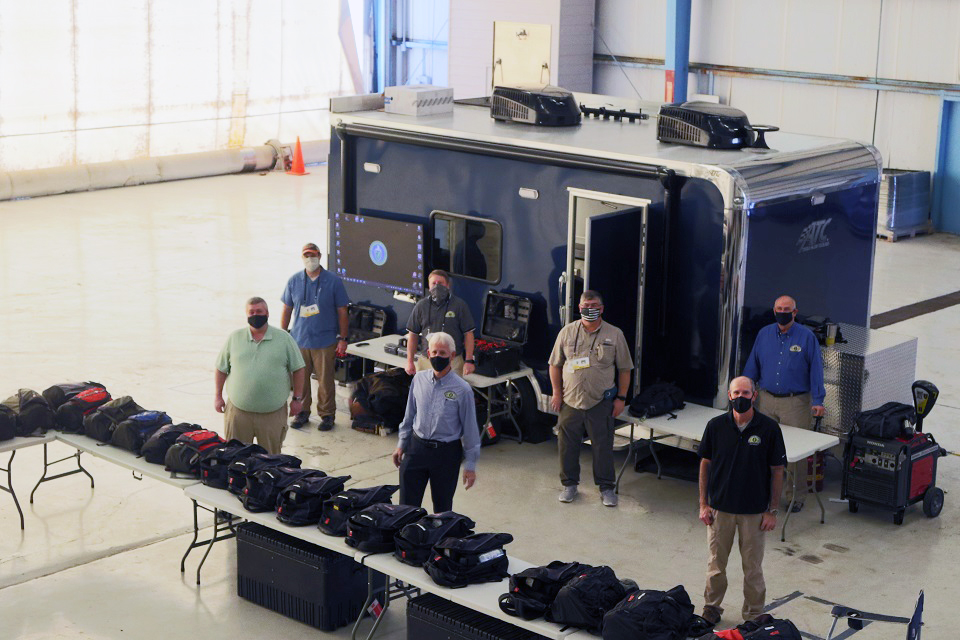
Members of the Region 2 Radiological Assistance Program preparing to mobilize at Super Bowl 55 in Tampa. From left, front row: Bill Riley, Steve Johnson, Jeff Barroso, and back row, Steve Cleveland, Jeff Bruner, Perry Pruitt, and Michael Murray. Team member Dale Perkins is not pictured.
When the world is watching, and you’re working security at high-profile events during a pandemic, standard safety protocols aren’t enough. For team members of the Region 2 Radiological Assistance Program (RAP), attending the Presidential Inauguration in Washington, D.C., and Super Bowl 55 in Tampa, Florida, involved total focus to the mission and enhanced COVID-19 protocols.
RAP teams are located regionally across the country and are the nation’s first-response resource in assessing an emergency and advising decision-makers on the hazards of a radiological incident. Region 2 is managed out of the Y-12 National Security Complex and is comprised of volunteer responders from Y-12, the National Nuclear Security Administration, and Oak Ridge National Laboratory.
On Jan. 26, Region 2 RAP members were in our nation’s capital supporting security surrounding President Joe Biden’s inauguration. Y-12’s Rich Utrera and three ORNL volunteers were there conducting preventive radiological nuclear detection (PRND) support.
”With COVID-19 and heightened security concerns around the Capitol building, we stayed in the background for the most part,” said Utrera. “We did our jobs, but kept away from the public as much as possible, keeping all us safe.”
Jeff Barroso, Y-12 Emergency Services and RAP 2 operations manager, said COVID-19’s impact may have reduced the size of the crowds attending both events, but it didn’t diminish the need for security.
At the Super Bowl for instance, organizers limited attendance to approximately 24,000, well below the stadium’s capacity. The Kansas City Chiefs (the visiting team) didn’t arrive in Tampa until the day before the game. The Super Bowl Experience, an opportunity for fans to see current and past NFL players, was scaled back.
“In spite of the changes, the Super Bowl remained one of the most-watched events of the year,” said Barroso. “With that level of exposure, all security-related preparations remained at a very high level, and RAP was expected to safely execute their mission to the effort.” In total, eight Region 2 RAP members supported the PRND operations for Super Bowl.
In both cities, RAP members followed the standard pandemic safety protocols - masks, daily temperature checks, and social distancing - but enhanced elements were also added. RAP members had to test negative for COVID-19 before being allowed to make the trip. Vehicle occupancy was limited to two members per vehicle, with the passenger sitting in the back seat.
“These enhanced controls allowed RAP to minimize the team’s exposure to COVID-19, while conducting our important duties,” said Barroso.
